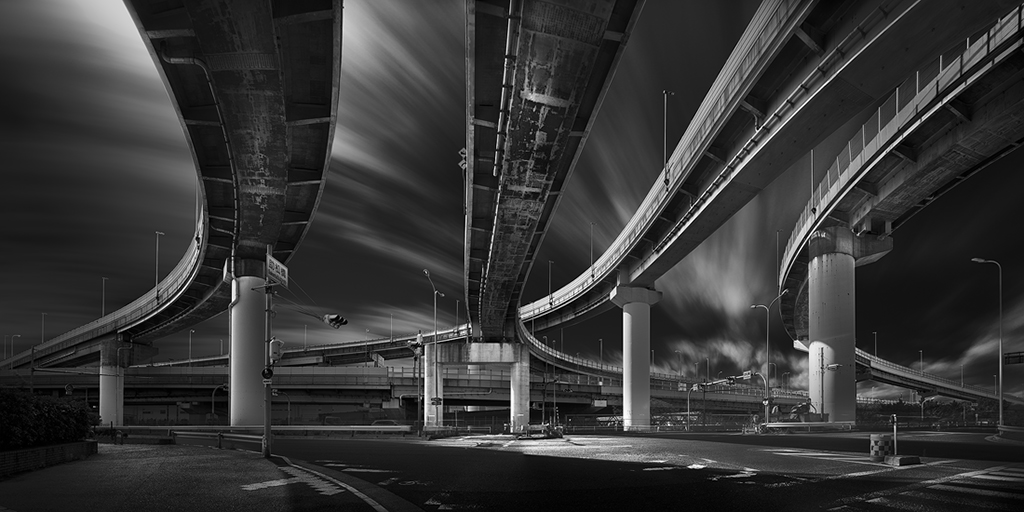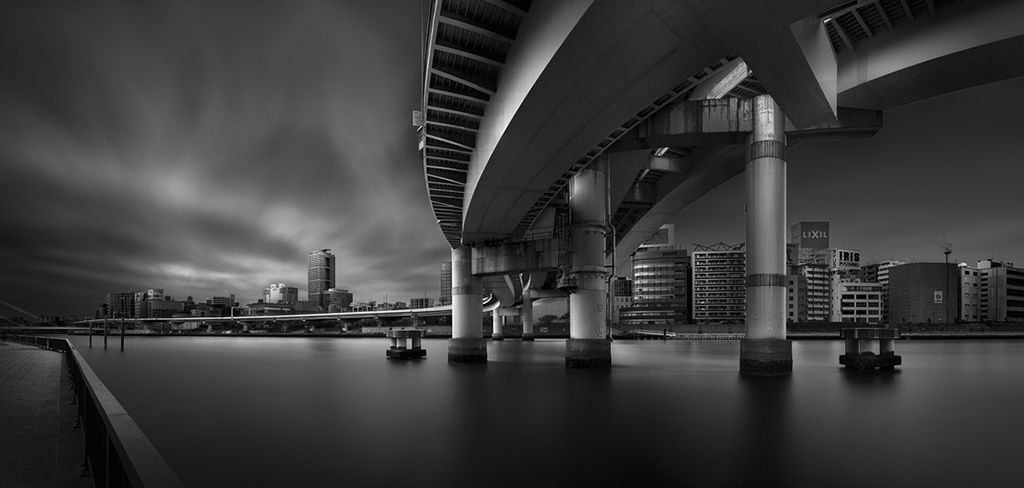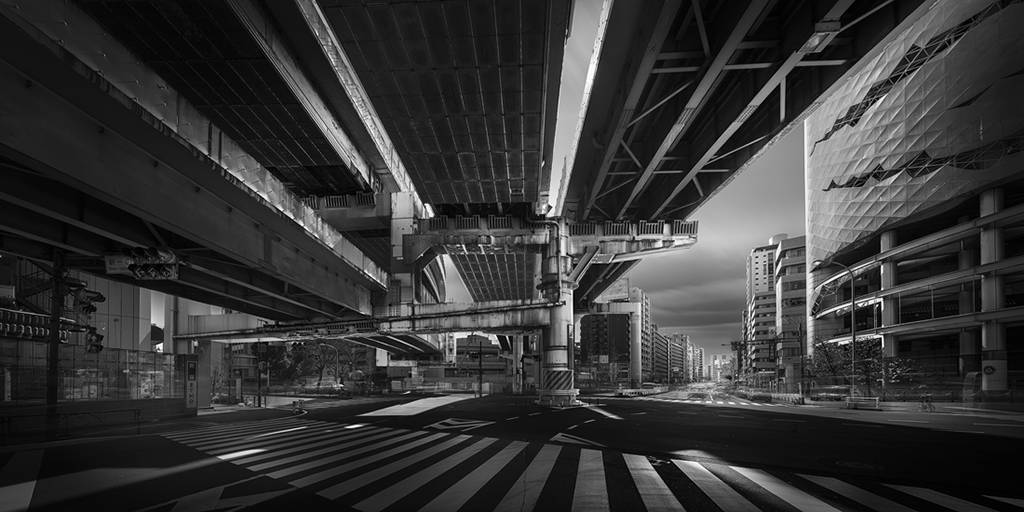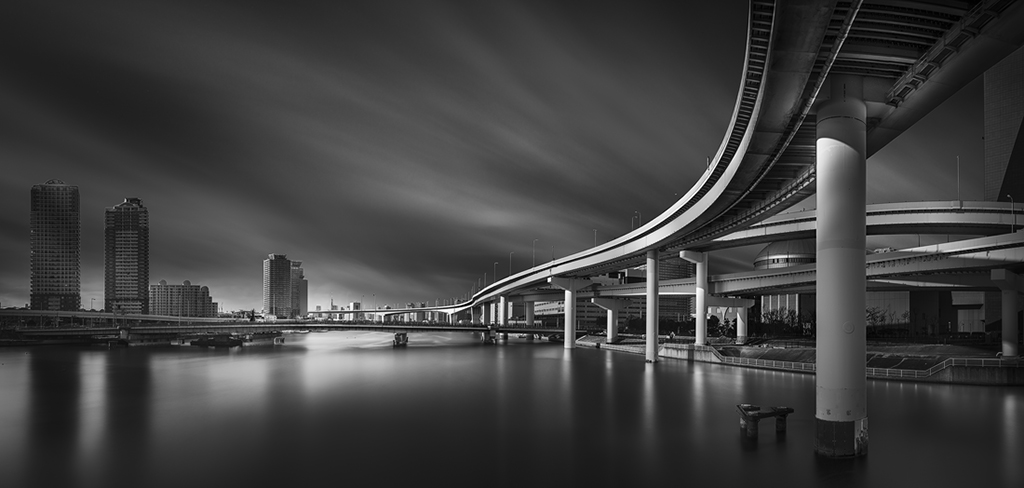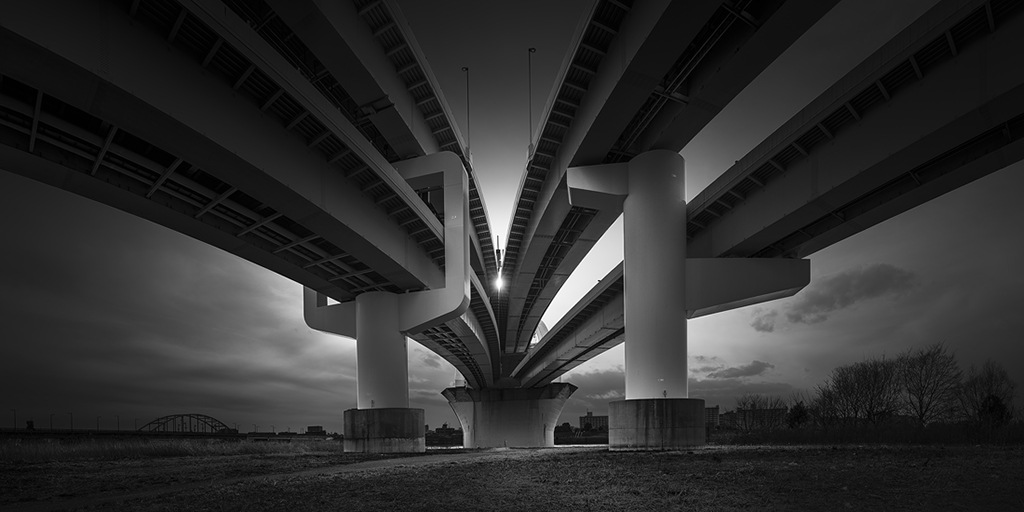honorable mention
Yoshihiko Wada japan
title
The Urban Legacy
In this new series, Yoshihiko wanted to capture not only their structures but also their surroundings in order to show that those huge structures are making an unique role of the cityscape in Japan.
“When I was shooting the initial image(the first image with six pillars), I felt I was standing at a heritage of somewhere in Rome. Perhaps those white huge columns made me feel so. Meanwhile I thought what I felt was obvious because our modern architectures had been heavily affected by the ancient architectural engineering and styles."
That was the moment Yoshihiko started to think those “Junctions” should been seen as architectural legacies in the current era.
.-What’ Junction?-
In Japan “junction” specifically means an interchange at highways. Having unique shape of lines of roads, pillars, toll gate, they became popular structures for both photographers and so called junction-mania.
Locations info:(Left to Right)
Sukematsu JCT in Osaka
Ryogoku JCT in Tokyo
Ichi-no-hashi JCT in Tokyo
Ari-ake JCT in Tokyo
Kou-hoku JCT in Tokyo
In search of something new and fresh, Yoshihiko's passion for photography started in 2011 when he purchased his first DSLR, a Nikon D90 which was the beginning of his unique photography career.
Waterfalls were his first obsession and found himself totally enamored with the surrealistic smooth flow caused by ND filters and found himself visiting a creek near his home every weekend, and experimenting with various filters.
He gradually changed his preferences and photography style and now finds himself in his most comfortable place in the black and white fine art genre. He found inspiration from both Julia Anna Gospodarou and Joel Tjintjelarr, who are pioneers of this genre. He learned the basics of this distinct post process style from them, daylight hyper long exposure with high contrast black and white processing. He now incorporates his own ideas, themes, colorings, and methods into his images.
He believes his photographs are not philosophical or difficult and everyone can easily understand them when they first see them. He thinks of his photographs as entertainment and if people can be entertained and feel joy from them he'd be very happy.
back to gallery
entry description
“The Urban Legacy” is Yoshihiko Wada’s second urban junction series, which consists of 10 panoramic images. In his previous series, “Calculated Chaos”, Yoshihiko depicted their unique structures, shapes and lines, which looked chaos at glance however they actually were extremely well designed to fit the relatively small urban areas.In this new series, Yoshihiko wanted to capture not only their structures but also their surroundings in order to show that those huge structures are making an unique role of the cityscape in Japan.
“When I was shooting the initial image(the first image with six pillars), I felt I was standing at a heritage of somewhere in Rome. Perhaps those white huge columns made me feel so. Meanwhile I thought what I felt was obvious because our modern architectures had been heavily affected by the ancient architectural engineering and styles."
That was the moment Yoshihiko started to think those “Junctions” should been seen as architectural legacies in the current era.
.-What’ Junction?-
In Japan “junction” specifically means an interchange at highways. Having unique shape of lines of roads, pillars, toll gate, they became popular structures for both photographers and so called junction-mania.
Locations info:(Left to Right)
Sukematsu JCT in Osaka
Ryogoku JCT in Tokyo
Ichi-no-hashi JCT in Tokyo
Ari-ake JCT in Tokyo
Kou-hoku JCT in Tokyo
about the photographer
As well as being a passionate photographer, Yoshihiko is also a professional sound designer in the very demanding video game industry. The long days and nights debugging games or sitting in a sound studio would eventually wear him out.In search of something new and fresh, Yoshihiko's passion for photography started in 2011 when he purchased his first DSLR, a Nikon D90 which was the beginning of his unique photography career.
Waterfalls were his first obsession and found himself totally enamored with the surrealistic smooth flow caused by ND filters and found himself visiting a creek near his home every weekend, and experimenting with various filters.
He gradually changed his preferences and photography style and now finds himself in his most comfortable place in the black and white fine art genre. He found inspiration from both Julia Anna Gospodarou and Joel Tjintjelarr, who are pioneers of this genre. He learned the basics of this distinct post process style from them, daylight hyper long exposure with high contrast black and white processing. He now incorporates his own ideas, themes, colorings, and methods into his images.
He believes his photographs are not philosophical or difficult and everyone can easily understand them when they first see them. He thinks of his photographs as entertainment and if people can be entertained and feel joy from them he'd be very happy.
back to gallery

